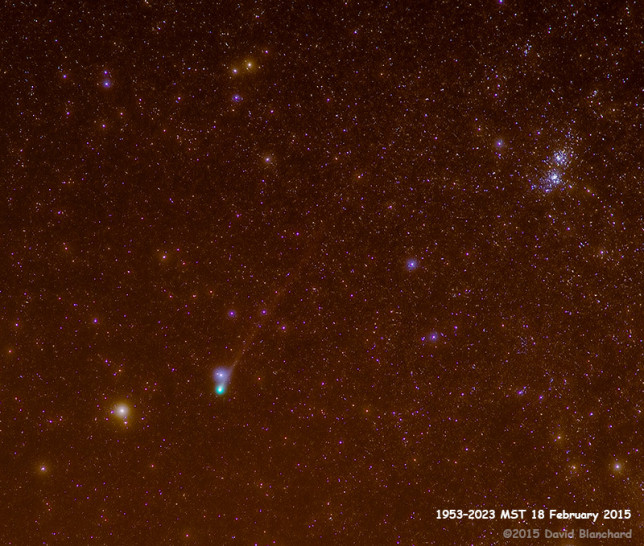Comet C/2014 Q2 Lovejoy continues to be a fascinating object to photograph in the evening sky. It is now located high in the sky at sunset and sets in the northwest overnight. It is, however, growing fainter and this requires longer exposure times to bring out the details. As noted in a previous post, I have been photographing the comet without an equatorial mount and this has limited my exposures to a few seconds. That has changed as I now have a tracker mounted on my tripod (iOptron SkyTracker) and this allows much longer exposures. It takes a bit of practice to properly align the device but I’ve gotten pretty good with a few sessions. With good alignment, it is possible to take exposures of 5–10 minutes without getting star trails.

On another night, I was again taking a sequence of images when some high, thin clouds moved in. Rather than shutting down, I continued to capture images. The result of the high clouds was to create a colored area around the brighter stars.

Cloudy skies have returned to northern Arizona and that will be the end of comet photography for at least a few days.